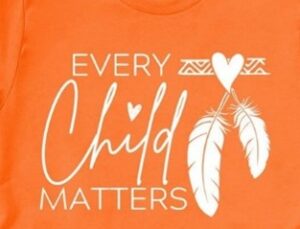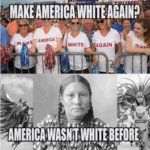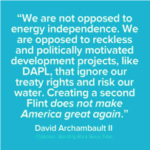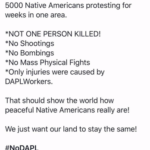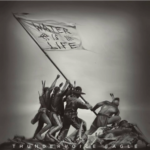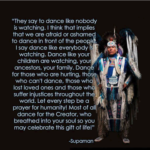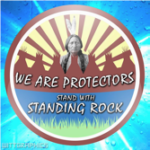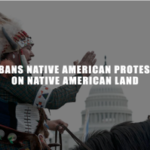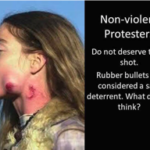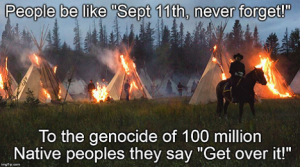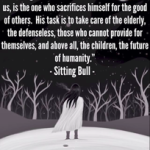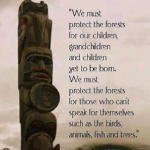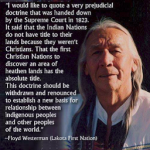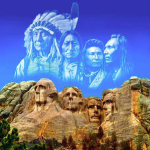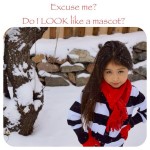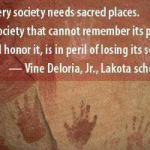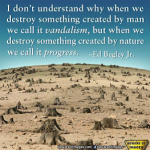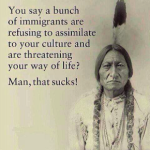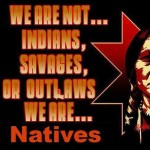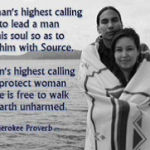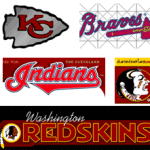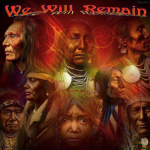Click the pictures to enlarge them. There are many different issues below, take your time and please read on.
September 30 is Orange Shirt Day, Canada’s National Day for Truth and Reconciliation.
On this day, Native communities and allies honor and remember the survivors of Indian Boarding Schools, as well as the children who never returned home. Native communities in Canada have recognized this date as a day of recognition since 2013, and in 2021 Canada formally recognized it as a holiday.
The Orange Shirt Day movement was begun by Phyllis Webstad (Northern Secwépemc) whose new shirt was taken from her on her first day at a boarding school. Her story of resilience in the face of attempted assimilation speaks to the courage of so many Native children.
While the U.S. does not recognize Orange Shirt Day as a national holiday, Native activists and allies honor it as a day of advocacy for truth and healing. Friends Committee on National Legislation | Support the Establishment of a Truth and Healing Commission on Indian Boarding School Policies (quorum.us)
Smithsonian Voices From the Smithsonian Museums NATIONAL MUSEUM OF THE AMERICAN INDIAN
The Long Path Toward Establishing Indigenous People’s Day, a Day to Honor and Recognize the First Peoples of America
Native American Indians are committed to making Indigenous Peoples 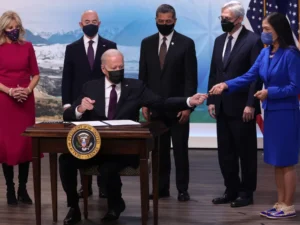 Day a national holiday in 2024. Dennis Zotigh October 11, 2024
Day a national holiday in 2024. Dennis Zotigh October 11, 2024
U.S. President Joe Biden hands a signing pen to Interior Secretary Deb Haaland as he signs an executive order to help improve public safety and justice reform for Native American communities after delivering remarks at the 2021 Tribal Nations Summit in 2021. Alex Wong / Getty Images
This Monday, October 14, many Americans will celebrate Indigenous Peoples’ Day by recognizing the history and contributions of Native peoples. President Biden’s administration has officially recognized Indigenous Peoples’ Day since 2021, but it is not yet a federal holiday. Thus, for the fourth year in a row, the United States will officially observe Indigenous Peoples Day alongside Columbus Day. However, The Indigenous Peoples’ Day Act, reintroduced in Congress on October 2, 2023, would potentially designate the second Monday of October as Indigenous Peoples’ Day nationwide. The bill currently has 56 cosponsors in the House of Representatives and 11 cosponsors in the Senate.
“On Indigenous Peoples’ Day, we honor the perseverance and courage of Indigenous peoples, show our gratitude for the myriad contributions they have made to our world, and renew our commitment to respect Tribal sovereignty and self-determination.” President Joseph Biden, 2023 Proclamation on Indigenous People’s Day
Looking back, generations of Native people throughout the Western Hemisphere have protested Columbus Day. In the forefront of their minds is the fact the colonial takeovers of the Americas, starting with Columbus, led to the deaths of millions of Native people and the forced assimilation of survivors. American Indian activists and their allies have long argued that Columbus Day, Columbus statues, and the discovery myth endorse his actions which include enslavement, torture and other atrocities to Native people.
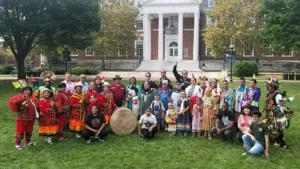 Native students, faculty members, and friends from North and South America gather to honor Johns Hopkins University’s Indigenous Peoples Day in Baltimore, Maryland. Photo courtesy of Tom Jefferson Jr.
Native students, faculty members, and friends from North and South America gather to honor Johns Hopkins University’s Indigenous Peoples Day in Baltimore, Maryland. Photo courtesy of Tom Jefferson Jr.
In 1977, participants at the United Nations International Conference on Discrimination against Indigenous Populations in the Americas proposed that Indigenous Peoples’ Day replace Columbus Day as a national holiday. Indigenous Peoples’ Day recognizes that Native people are the first inhabitants of the Americas, including the lands that later became the United States of America. And it urges Americans to rethink history marking a change of course from previous administrations in their proclamations marking Columbus Day, which honors the explorer, Christopher Columbus.
The movement to replace Columbus Day with Indigenous Peoples’ Day or Native American Day has gained momentum and spread to states, cities, and towns across the United States. The first state to rename Columbus Day was South Dakota, in 1990. Hawai’i has also changed the name of its October 12 holiday to Discoverers’ Day, in honor of the Polynesian navigators who peopled the islands. Berkeley, California, became the first city to make the change in 1992, when the city council renamed Columbus Day as Indigenous Peoples’ Day. In 2015 an estimated 6,000 Native people and their supporters gathered at Randall’s Island, New York, to recognize the survival of the Indigenous peoples of the Western Hemisphere. The demonstration’s success and the worldwide media attention it attracted planted the seeds for creating an Indigenous Peoples’ Day in New York City. According to the website RenameColumbusDay.org:
- Approximate cities: 216
- Approximate schools: 83
- Approximate counties: 20
- Approximate states not observing Columbus Day: 29, plus Washington, D.C., have renamed Columbus Day and adopted Indigenous Peoples’ Day
Kentucky now has the most cities of any of the states, who have adopted Indigenous People’s Day, thanks to Indigenous Rights Activist Angela Arnette-Garner. Arnette-Garner said, “As a long-time Indigenous rights activist, I have lobbied city, county, and state governments in Kentucky for the passage of Indigenous Peoples Day proclamations (thus far 32 city, county, and state proclamations passed in Kentucky). This, in an effort to help educate people about Indigenous history and culture, encourage truthful dialogue about genocide, expose the shameful legacy of Christopher Columbus, repudiate the doctrine of discovery, and advocate for the decolonization of education. Yet, my ultimate goal in founding the Indigenous Peoples Day movement of Kentucky, is to demonstrate that if widespread support could be garnered in one of the most staunchly conservative states in the country, then establishment of a federal holiday is truly attainable. I fervently hope that Congress takes a serious look at the Indigenous Peoples Day movement of Kentucky.”
Universities and schools across the country are also observing the new commemoration. “Mythology about Columbus and the ‘discovery’ of the Americas continues to be many American children’s first classroom lesson about encountering different cultures, ethnicities, and peoples. Teaching more accurate and complete narratives and differing perspectives is key to our society’s rethinking its history,” stated Renee Gokey (Eastern Shawnee), NMAI Teacher Services Coordinator. In past years, the museum has hosted Indigenous Peoples’ Curriculum Days and teach-ins at the beginning of the school year in Washington DC and New York. Recently a Teach-In for Change was held at the National Museum of the American Indian in the Washington DC to prepare teachers on how to prepare for Indigenous Peoples Day. Links to additional resources are available through these links: National Museum of the American Indian, Native Knowledge 360°, Learning for Justice, and IllumiNative. These resources include curricula, sample lesson plans, books, and videos.
Throughout Indian Country, Indigenous Peoples Day is being observed through prayer vigils, parades, powwows, symposiums, concerts, lectures, rallies, and classrooms, all in an effort to help America rethink American history.
Dennis Zotigh | Dennis W. Zotigh (Kiowa/Ohkay Owingeh Pueblo/Isante Dakota Indian) is a member of the Kiowa Gourd Clan and San Juan Pueblo Winter Clan and a descendant of Sitting Bear and No Retreat, both principal war chiefs of the Kiowas. Dennis works as a writer and cultural specialist at the Smithsonian’s National Museum of the American Indian in Washington, D.C. American History Education Learning Native © 2024 Smithsonian Magazine
 “Someday the earth will weep, she will beg for her life, she will cry with tears of blood. You will make a choice, if you will help her or let her die, and when she dies, you too will die.” Hollow Horn Bear – Lakota 1850 – 1913
“Someday the earth will weep, she will beg for her life, she will cry with tears of blood. You will make a choice, if you will help her or let her die, and when she dies, you too will die.” Hollow Horn Bear – Lakota 1850 – 1913
NY Times: A Conversation With Native Americans on Race
August 15th, 2017 Blog
Great video from The New York Times’s Emmy-award-winning and Oscar-nominated short documentary series!
In this series which explores the “Conversation on Race”, filmmakers speak with Native Americans about identity, blood quantum and other issues.
Message from the filmmakers:
“Despite the broad spectrum of indigenous identities who participated in our conversation, they shared the experience of living away from their respective reservations and communities.
We hope that this piece helps inspire more online and offline conversations that include an even wider range of Native voices living in, around and beyond reservation communities.”
http://nativenewsonline.net/currents/us-presidents-words-concerning-american-indians/
For information on the Dakota Access Pipeline Controversy http://www.smithsonianmag.com/smart-news/understanding-controversy-behind-dakota-access-pipeline-180960450/?utm_source=smithsoniandaily&no-ist
Look for the following pages: National Native American Veteran’s Memorial; Council on Native Affairs; Smallpox; A very brief Overview  of Native History; Census Information; Natives Today; Natives in Prison; Cities & Challenges; Boarding Schools; Teen Suicide; Recognition; Violence Against Women and VOTE! Don’t forget to look at Women’s Issues & Health Issues.
of Native History; Census Information; Natives Today; Natives in Prison; Cities & Challenges; Boarding Schools; Teen Suicide; Recognition; Violence Against Women and VOTE! Don’t forget to look at Women’s Issues & Health Issues.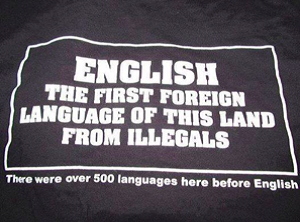
There are several articles below. There are 3 different photo galleries on this page, click each picture to enlarge it.
The head of National Museum of the American Indian on what we should all know
Kevin Gover, director of the National Museum of the American Indian. (Joshua Yospyn/For The Washington Post) By Joe Heim November 23
Kevin Gover, 61, is the director of the Smithsonian’s National Museum of the American Indian. A member of the Pawnee tribe, he was born in Oklahoma. He and his wife, Anne Marie, live in Northern Virginia.
Do you prefer being called Native American or American Indian?
I’m indifferent. [Laughs.] As a friend of mine says, they’re equally inaccurate, so you can use them interchangeably.
What is accurate?
What each tribal nation calls itself, whatever they choose to call themselves, then that’s what they are first and foremost. An identity as a Native American is secondary to your tribal identity. And then your identity as an American is also part of your makeup. If you ask 10 Indians which they prefer, you’ll get at least five different answers.
There’s so much that most Americans don’t know about Native American history. What’s something we all should know?
Just a basic civics lesson: That Indian tribes are governments. That they are part of the federalist system. It’s not quite the system that was envisioned by the founders, which would have been much different and the tribes much more independent than they are. But certainly the existence of Indian tribes on a permanent basis was anticipated by the founders and the Constitution.
Is there a question that Native Americans get tired of being asked?
I think native people actually welcome questions and are very responsive. It’s more that you meet somebody and they say, “Are you Native American?” And you say, “Why, yes, I am.” And they say, “Well, you know, I’m part … ‘whatever’ myself.” Usually Cherokee. And quite often their ancestry includes some Native American royalty that doesn’t exist. In a way, it’s off-putting. On the other hand, they’re trying to connect. Which is an interesting phenomenon — that Americans somehow feel a need to show some native ancestry that demonstrates deeper roots than they might otherwise have.
Indian leaders have talked about the pipeline protests at the Standing Rock Sioux Reservation in North Dakota as a reawakening for tribes. What’s your sense of what’s happening out there?
It’s something like that. It’s not surprising, but what I can’t explain is why this issue has caught fire and sort of unified Indian Country, because these kinds of things are going on all the time. Some insult or degradation of tribal property rights or tribal environmental interests are happening on an ongoing basis. But it’s quite a phenomenon. I haven’t seen something like this in many, many years. The reason the other tribes support them is they all have suffered some similar insult.
How many tribes are there?
There are 568 federally recognized tribes, and they range in size from a few dozen people to several hundred thousand people.
I imagine you feel pressure to represent 568 different stories. How does that play out?
When the museum first opened, we basically had 24 tribes represented. And each got to create their own little exhibit. One of the things that occurred to us was that we’re a national museum and so we really should try to tell national stories instead of smaller stories. And so that’s the direction we’ve taken.
Is the museum more for tribes or for visitors?
In our actual spaces, here and in New York, it has to be for the visitors. We have other programs and projects that are more wide-ranging and really intended for the audience outside the museum. But inside the museum it has to be for the visitors who come, only a small percentage of whom are Native Americans. Now, we’re happy that when Native Americans do come to the museum, the overwhelming majority like what they see. If they didn’t, we would have a real problem. But that’s sort of preaching to the choir, and we’re trying to get to the congregation.
The museum has been open 12 years. Are there any parts of its mission that you feel it hasn’t met?
The answer is yes. There are thousands of stories that remain untold that, over time, the museum can and will hopefully address. Our charter goes beyond the U.S. It goes to Canada, Mexico, Central America and South America. So there are thousands of communities out there that we haven’t reached and haven’t presented. So in one sense our work will never be done.
Second, I think that what is expected of any museum will change over time. So what they did at the opening here was the right thing, which is to say, we’re still here and we’re diverse. We’re not any one thing. And the museum delivered that message effectively. Now we’re looking at these national stories and thinking about how Americans learn and interpret history and how we might contribute to their doing that better. What we’re taught in school about Indians is mostly wrong. What we get from popular culture about Indians is almost entirely wrong. And so we shouldn’t be surprised that people don’t know very much that’s true about Indians. So we think about what can we do about that.
What’s the gravest threat for Native Americans today?
Surely one of them, perhaps the largest, is the ignorance of the non-Native public about the Native American past and present. Because that leads to misunderstanding in evaluating contemporary issues. Take Standing Rock, for example. If you knew nothing about the history of the Sioux Nation, the United States, the Missouri River itself, you might well conclude, Well, look, everybody has to have a pipeline at some point, so why should they be any different? And that would be a perfectly rational point of view.
But if you know what the history of the Sioux Nation is, you know that treaties were made with the Sioux Nation concerning these lands that no longer belong to the Sioux Nation. And you know that the development of the Missouri River for the past century has always, always involved taking of Indian land. They were building dams up and down the Missouri, and every Indian reservation along the way was flooded. Some of the best land was flooded, which only deepened their poverty and made it that much harder to climb out. So we should know that kind of history. We need to know that in order to know what equity is in this contemporary situation.
It has almost become a cliché to ask Native Americans how they feel about the term “Redskins.” But is there any argument for the team using that name that you would accept?
No. I experience that as a racist word. As an insult. As something that’s meant to disparage people like me. And so, no, there is no acceptable use of that word.
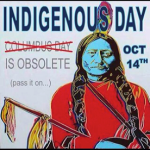 Columbus Day Is Now Indigenous People’s Day in Seattle, Denver And Minneapolis – Oct. 2016
Columbus Day Is Now Indigenous People’s Day in Seattle, Denver And Minneapolis – Oct. 2016
Check out the Words to Ponder in the Newsletter section!
The below quote was an actual quote as reported by the Missoula Independent.
During Justice Scalia’s tenure on the Supreme Court, cases relating to tribal interest lost in nearly 80% of the cases. Tribal interests prevailed in only 21.4% of the cases — 12 wins, 44 losses, and 8 split decisions or no decisions. Sdc Journal 3575 2/23 /2016
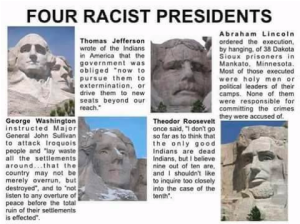

 The Day White Innocence Died: An Indigenous Take on #September11 Gyasi Ross 9/10/15
The Day White Innocence Died: An Indigenous Take on #September11 Gyasi Ross 9/10/15
I remember the day, 9/11/2001, like it was yesterday. I was a student in New York City. I’d been living there for a while at that time—I was still adjusting to being in the big city. I was a Native kid, a rez boy who grew up as a hip-hop head, and so I was living out my childhood fantasy of living in the birthplace of hip-hop while going to school and trying to pay my monthly rent. Not easy.
I had class at nine o’clock that morning on September 11. I had a formula— it took me eight minutes to get dressed, wrap my hair in a t-shirt (on fleek!) and get to class. That meant that I could sleep until 8:52 in the morning. I always listened to the radio when I slept, so my dreams were often influenced by whatever I heard on the radio. I’ve done that since I was a little kid—I remember having nightmares about playing basketball with the “Thriller” version of Michael Jackson when I was little guy and I tumbled many, many times with Boy George as well!
But I digress.
On this particular morning—September 11—I remember hitting “snooze” in the morning time and going back to sleep. When I passed back out, I remember dreaming about a plane, a small crop duster in my dream, hitting a small building and falling to the ground. When I woke up, I hurried through my five-minute “get ready” routine—splash water in my face, brush my teeth, wrap my hair in a t-shirt and throw on the cleanest clothes in my room. Out of my apartment as quickly as I could!
At that time, my apartment was ONE block away from my school so I could make it in literally no time. When I rounded the corner from my block to the school, there were hundreds of people just standing outside on the corner and in the street. Now granted, this is New York City, White
Harlem, so hundreds of people on a random street is not necessarily earth-shattering news. Yet, this was different—people were crying in the street, people looked confused in the street, and most important, these folks were right in front of my school, which was not really a sexy or fun street to hang out on.
Plus, it was 9 in the morning—I made it just in time for class. There were never hundreds of people there at 9 in the morning when class just started.
I saw my dear friend Vanessa and ran over to her. At that time, there were virtually no Natives at my school so Vanessa and I hung very, very close together and supported each other protectively. When I saw Vanessa, she was crying, so I asked her what was wrong.
“You haven’t heard?” she asked me as if I was the most oblivious person in the world, which apparently I was. “Heard what?” I asked her, confirming my ignorance and obliviousness. Vanessa answered incredulously, “Somebody flew a plane into the World Trade Center. There was also one that went down at the Pentagon. I don’t know if anything else happened down in Virginia…”
At that point, I knew why Vanessa was crying so passionately; her brother was stationed in Virginia. The scale of the destruction and tragedy still hadn’t dawned on me—I just wanted to find out if her brother was okay. At that moment I also understood why I had the weird dream about the crop duster running into a building—I heard that news on the radio right before I woke up and it crept into my subconscious. Unfortunately, we couldn’t call to find out if her brother was okay; all the phone lines were compromised, even landlines. That remained the case for almost a week. I later learned that my mom thought I was dead because she had never been to New York—how would she know that I was on the complete opposite side of Manhattan?
I thought I was dead too. When I learned of the destruction and evil behind the plane crashes, I figured that somebody was coming back to finish us off. There were bomb threats so everybody returned to their apartments and were no longer in the streets. I’m a country boy, a rez boy—this stuff was making no sense to me. I wanted to be home, on the rez, where people cry together and laugh together, where we mourn together, feel fear together and face death together. I remember when the smell crept uptown and I could smell the fire and destruction and it forced me to close my apartment window despite the late summer heat. I wished I could share that claustrophobia with someone.
But this was the city, not my homelands, where everyone knows each other. Instead, this was a place with millions and millions of people within extremely close quarters and nobody knows each other. It was weird. Not scary—I was cool dying, if that’s what was gonna happen. I was just sad that I couldn’t get my mom and my little brother on the phone to tell them that I loved them first.
Obviously I didn’t die. Obviously a lot of information came out later that showed the enormity of the day that I didn’t understand initially. Obviously it was much, much bigger than my little take on the day. Turns out that September 11th is probably the most important date in recent history— that date became the excuse for a whole new branch of government, a racist war against a nation that had nothing to do with that date, a racist war against an idea, terrorism, that is impossible to win. Because of that date, we’re still spending hundreds of millions of dollars a day on a war that had nothing to do with September 11th that could be instead dedicated to education, health care, social security, veterans’ benefits or any number of more worthwhile things.
It was undoubtedly a tragedy. But September 11th wasn’t a surprise, at least not for Native people and many people of color. No, Native people were already well aware of how destructive and evil people could be. How did we know? AMERICA TAUGHT US THAT; really, September 11th was only a surprise for white people and for those who didn’t realize that America had already perpetrated many September 11ths of its own. Native people knew that. We knew that America had a whole bunch of blood on its hands and that there was always a harvest season, always a reckoning. Sir Isaac Newton gave that harvest a name in his Third Law of Motion, that every action has an equal and opposite reaction.
Oh yeah, that means that there will be more September 11ths as well—it’s inevitable unless America works to acknowledge and reconcile with its many victims of domestic terrorism against its own people. We see that energy right now—the current distrust of the federal government, the distrust of law enforcement and peoples’ movements of all colors that don’t believe in the legitimacy of the “powers that be,” like Idle No More, the Occupy Movement, Black Lives Matter and the Tea Party. Obviously the viewpoints of those various movements are vastly different, but the energy is largely the same.
“We don’t believe you. This Nation is built upon raw power and deceit and not freedom, equality or opportunity.”
There will be more September 11ths unless we change, folks. God forbid, but unless we do something it will happen. There will be rectification for the Marias Massacre, for the Sand Creek Massacre, for Wounded Knee, for North Tulsa/Black Wall Street, the Mankato mass hanging, the Red Summer of 1919, Joe Coe, Emmett Till, internment camps of Japanese, Chinese Exclusion Act, slavery, Jim Crow, genocide, forced tubal ligation of Native women, Tuskegee experiments, etc., etc., etc.
For every action, there is an equal and opposite reaction. In the words of Ron Burgundy, “It’s science.” So, how do we stop this horrible cycle? Acknowledgment. Conversation. Painful conversation. Hell, restitution, reparations. Not punitive—just what the US owes. To wit, honor treaties with Native people and recognize aboriginal title, whether that be via monetary compensation (a disgusting compromise for many Native people, yet one that acknowledges practical realities) or specific performance. Monetary compensation for black folks for 40 acres and a mule—what is that in today’s dollars?
Formally apologize. Acknowledge. Treat us as human beings—the inhumane way that many white folks on this continent treated people of color for 400 years still influences the way they perceive us today, hence the incredibly disproportionate amount of deaths for Native and Black people at the hands of law enforcement.
Not civil rights– human rights—treat us like human beings.
Otherwise there will be more September 11ths. It’s physics. Natural law. We’re stuck with each other—none of us are going anyplace. But acknowledgment, reconciliation and restitution of America’s past crimes will move help us move to a new age, where we can get past these historical demons and actually start living in the 21st Century.
God bless the families of all who were harmed by September 11th. God also bless the families devastated by all instances of terrorism, including those perpetrated by the United States.
Gyasi Ross, Editor at Large, Blackfeet Nation/Suquamish Territories
NEW PROJECT “ISSKOOTSIK” (BEFORE HERE WAS HERE) AUDIOBOOK AVAILABLE – NOW at shop.krecs.com Twitter: @BigIndianGyasi
Read more at http://indiancountrytodaymedianetwork.com/2015/09/10/thing-about-skins-daywhite-innocence-died-indigenous-take-september11-161710
Michelle Obama: ‘Our Government…Outlawed Indian Religions’ By CNSNews.com Staff April 9, 2015
(CNSNews.com) – On Wednesday, First Lady Michelle Obama addressed a gathering at the White House that focused on the topic of creating opportunity for Native American youth. The White House posted her prepared remarks online. Here is an excerpt from the First Lady’s remarks:
You see, we need to be very clear about where the challenges in this community first started.
Folks in Indian Country didn’t just wake up one day with addiction problems. Poverty and violence didn’t just randomly happen to this community. These issues are the result of a long history of systematic discrimination and abuse.
Let me offer just a few examples from our past, starting with how, back in 1830, we passed a law removing Native Americans from their homes and forcibly re-locating them to barren lands out west. The Trail of Tears was part of this process. Then we began separating children from their families and sending them to boarding schools designed to strip them of all traces of their culture, language and history. And then our government started issuing what were known as “Civilization Regulations” – regulations that outlawed Indian religions, ceremonies and practices– so we literally made their culture illegal.
And these are just a few examples. I could continue on like this for hours. So given this history, we shouldn’t be surprised at the challenges that kids in Indian Country are facing today. And we should never forget that we played a role in this. Make no mistake about it– we own this.
And we can’t just invest a million here and a million there, or come up with some five year or ten-year plan and think we’re going to make a real impact. This is truly about nation-building, and it will require fresh thinking and a massive infusion of resources over generations. That’s right, not just years, but generations.
******************************************************************************
Prepared Remarks of First Lady Michelle Obama for White House Convening on Creating Opportunity… As Prepared for Delivery Washington, DC Good… whitehouse.gov SDC Journal #3352 4 15 15
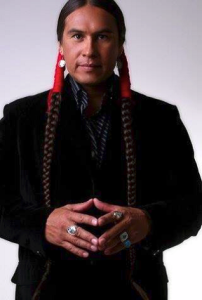 Heart of America Indian Center – Voiceless and Shameful No More
Heart of America Indian Center – Voiceless and Shameful No More
What I am going to share is not for sympathy; I am only sharing with hopes that others may find an understanding.
There are days I feel overwhelmed about braiding my hair and when I do, I allow my thoughts to go back to my childhood, when society was telling me “give it up – Crazy Horse is dead”. I realized what the dominant society was saying to me, that being Indian was no longer an option in this world. It was a struggle and very confusing as a child. I was asking myself “where do I belong and do I even belong?” There were times I was mad at the Creator for making me Indian, even though the Creator knew how mean the people were. The biggest struggles of my youth were the disapproval from the dominant society for being Indian and finding my own self -acceptance. The feeling of being defenseless and the pressures of society pressing down on me were hard to deal with at times. It became extremely difficult when my grandparents passed on. They were the ones who encouraged me the most to remain Indian and when they left this world, it felt like I was standing in the center of the universe, but not in a good way. When I looked around, I saw that the people were accepting the assimilation that was being forced upon them. There was emptiness in their eyes. But something in my heart kept screaming “no, don’t give up; we are still with you.” Today, I like to think that was my ancestors. Thank goodness for the Indian people back then that kept their hair long and the Indian ways of our people alive. Without them, hard telling where I would be today or if I would even be alive. I am no longer a defenseless child.
I also realized that I have a voice. I want to use this voice for the goodness of life.
Today I go to schools and share the true positive history of my people and not the altered history that segregates us. When I walk into a classroom, with long braids and wearing clothes of today, the Indian children light up. It is good for Indian children to know that they don’t have to wear leathers and feathers to be seen as an Indian. They gain a sense of pride back. They sit taller and the defenseless feeling that they may have had is now gone. They feel strong knowing that there are still their own people around who are not ashamed of being Indian. I share my alcohol and drug free lifestyle with them all.
If I can be a person who takes away the shame for the Indian children and the idea that we are only of the past, I know we are on the right path for healing.
That is what I want to show all people. It does not matter who you are or what color skin you have. It is unhealthy for self and the world to feel ashamed. You have been given a beautiful gift and that gift is life. It is something we all share in. I could be angry and I could even feel sorry for myself, but that doesn’t make our world a better place. I don’t know much, but I do know that I desire to allow my ancestors to feel proud and show them that their sacrifice is not going to be
wasted or forgotten. I know that the people of today are not responsible for the past, but please remember we are innocent also. I know we can’t go back and change the past, but means that we are all here today, we are very much responsible for tomorrow.
I am thankful for my family, who still encourage me, and for those children who stand taller for who they are, and because they stand taller, I stand taller. I refuse to allow the love and ways of my ancestors to only remain in the past, I refuse to allow my people, urban or reservation, to be forgotten about. That is why I braid my hair every day. I don’t want to forget who I am and where I come from. I am voiceless and shameful no more. “I AM INDIAN.”
Here at the Kansas City Indian Center, we were faced with a choice, do we continue using the funding we have to go to schools or do we provide food for the people? The number of people coming to us for help has increased drastically in the past few years, and we couldn’t turn families away. We choose to help the people. Now, we are turning to our relatives and friends to help us with the community education. We depend on the generosity of people and what grants are available to provide services.
If you can assist us in our efforts to continue outreach to schools and other educational events, we accept donations by mail, at the center or credit/debit cards through paypal on our webpage: http://www.kcindiancenter.org/Ways%20to %20Donate.shtml Thank you all so very much for your support. SCD Journal #3205 9/26/14
There are several articles below. There are 2 different photo galleries on this page, click the picture to enlarge it.
 Congratulations to Hailey Lunderman, Mississippi Choctaw/Lakota, who was recognized as Miss Softball for the State of Mississippi. The award is for the state’s top softball player in all class level of play. The sophomore from Neshoba Central High School led her team to a 5A State Title this season. She had a .508 batting average and 60 runs scored in 37 games this season. Congrats to Hailey! ONLY a sophomore! from sdc Journal #2864 5.31.13
Congratulations to Hailey Lunderman, Mississippi Choctaw/Lakota, who was recognized as Miss Softball for the State of Mississippi. The award is for the state’s top softball player in all class level of play. The sophomore from Neshoba Central High School led her team to a 5A State Title this season. She had a .508 batting average and 60 runs scored in 37 games this season. Congrats to Hailey! ONLY a sophomore! from sdc Journal #2864 5.31.13
Fix the Census’ Archaic Racial Categories
By KENNETH PREWITT NYT Editorial August 21, 2013
STARTING in 1790, and every 10 years since, the census has sorted the American population into distinct racial groups. Remarkably, a discredited relic of 18th-century science, the “five races of mankind,” lives on in the 21st century. Today, the census calls these five races white; black; American Indian or Alaska Native; Asian; and Native Hawaiian or other Pacific Islander.
The nation’s founders put a hierarchical racial classification to political use: its premise of white supremacy justified, among other things, enslaving Africans, violent removal of Native Americans from their land, the colonization of Caribbean and Pacific islands, Jim Crow subjugation and the importation of cheap labor from China and Mexico.
Of course, officially sanctioned discrimination was finally outlawed by civil rights legislation in 1964. The underlying demographic categories, however, were kept. Securing civil rights required statistics. Thus resulted an uneasy marriage of preposterous 18th-century racial classifications to legitimate 20th-century policy goals like fair electoral representation, anti-discrimination programs, school desegregation, bilingual education and affirmative action.
But the demographic revolution since the immigration overhaul of 1965 has pushed the outdated (and politically constructed) notion of race to the breaking point. In June the Supreme Court struck down a core provision of the Voting Rights Act, taking note of changing demographics. I disagree with the court’s ruling, but agree that society is changing. And our statistics must reflect those changes.
Fast-growing population groups — mixed-race Americans, those with “hyphenated” identities, immigrants and their children, anyone under 30 — increasingly complain that the choices offered by the census are too limited, even ludicrous. Particularly tortured is the Census Bureau’s designation, since 1970, of “Hispanic” as an ethnicity or origin, thereby compelling Hispanics to
also choose a “race.” In 2010, Hispanics were offered the option to select more than one race, but 37 percent opted for “some other race” — a telling indicator that the term itself is the problem. Indeed, anyone who filled in “some other race” that year was allocated to one or more of the five main groupings. Many absurdities have resulted.
America has about 1.5 million immigrants from sub-Saharan Africa — some 3 percent of the nation’s black population. Like President Obama’s father, who was Kenyan, their experience differs vastly from that of African-Americans whose ancestors were enslaved, yet they are subsumed into the same category — one that, until this very year, continued to include the outdated term “Negro.”
The census considers Arabs white, along with non-Arabs like Turks and Kurds because they have origins in the Middle East or North Africa. Migrants from the former Soviet nations in Central Asia are lumped in as white along with descendants of New England pilgrims.
An indigenous person from Peru, Bolivia or Guatemala is Hispanic, but if she “maintains tribal affiliation or community attachment,” she might also be counted as part of a racial group that includes the Inupiat and Yupik peoples of Alaska.
Are Australian immigrants whites or Pacific Islanders? (The Census Bureau’s own documents are unclear on this.)
The census has no second-generation question, leaving Congress to debate immigration reform with inadequate statistics about which new Americans are learning English, finishing school, living in segregated neighborhoods or staying out of jail. Social scientists closely track intermarriage as an indicator of assimilation, but the census reports intermarriage only among whites, blacks, Hispanics and others — overlooking unions between, say, Japanese and Chinese, Cubans and Mexicans, Nigerians and native-born blacks. These marriages may have as much to tell us about where the nation is headed as the rate at which whites intermarry.
Much attention has been paid to the news that non-Hispanic whites now account for less than half of births in the United States and that deaths now exceed births among non-Hispanic whites. These projections are oversimplified and misleading because they rely on the outdated “five races” concept. The far more significant turning point is the shift from a nation of a few large racial blocs into a hybrid America of numerous nationalities, ethnicities and cultures, unprecedented in human history. It is this hybrid, multivalent, dynamic America that is not reflected in the census. We cannot, however, fix this at the expense of abandoning racial categories, which are still needed for legitimate policy purposes.
The Census Bureau has begun to consider what changes it will recommend for the 2020 census. It will focus, appropriately, on operational improvements, like increasing response rates. But there are also political decisions to be made.
I URGE three actions. First, drop the current race questions, which misleadingly conflate race and nationality, and ask two new questions: one based on a streamlined version of today’s ethnic and racial categories, and a separate, comprehensive nationality question. (The 2010 census asked Hispanics, Asians and Pacific Islanders to specify a national origin and allowed American Indians and Alaska Natives to put down their tribe.)
These two questions would allow for much-needed flexibility. Broad racial groupings are significant for protecting voting rights, but information on national origin is more useful for understanding health disparities in a metropolis, or for diversifying a university’s student body. Indeed, the failure to appreciate rising inequality within the country’s white majority and to distinguish, say, inner-city blacks from African asylum-seekers, or Southeast Asian refugees from well-educated East Asians, have contributed to the criticisms of affirmative action as too blunt a tool of social policy.
Second, add parental place of birth to the census. One-fourth of Americans under the age of 18 are children of immigrants — a proportion that will increase sharply over the next quartercentury. Third, slowly phase in the use of the data to make policy. There is a precedent: in 2000, there was strong opposition to the new option of selecting more than one race. It was feared that this would reduce the size of various racial minorities. The government responded by counting those who are white and of one minority race as minorities for the purposes of civil-rights monitoring and enforcement. The new comprehensive statistics on national origin would be put to use judiciously. The five races would not disappear from the statistical system, but neither wouldthey be the only policy tool available.
Americans may hope for a colorblind future, but we know that the legacy of discrimination continues to haunt us; that some new immigrants are assimilated even as others are left behind; that new versions of racism crop up, within as well as among the five “races.”
Faced with these empirical realities, statistical ignorance is a moral failure. It is also a political failure to ignore the arrival of a hybrid America. Even the questions on race we use in 2020 will be wrong for 2100. It will take decades of gradual re-engineering to match census statistics to demographic realities. The Census Bureau is prepared; what’s missing is public awareness and political leadership.
Kenneth Prewitt, the director of the United States Census Bureau from 1998 to 2000, is a professor of public affairs at Columbia University and the author of “What Is Your Race? The Census and Our Flawed Effort to Classify Americans.”
Journal #2926 from sdc 8.27.13
Idle No More
In the winter of 2012, flash mob round dances, demonstrations, hunger strikes, and blockades swept Canada. What began as a protest against new laws seen as curtailing environmental protections and infringing indigenous sovereignty, quickly grew into a movement for indigenous rights and environmental justice. On this edition, Sylvia McAdam, one of the founders of Idle No More, tells the story of the movement. http://idlenomore.ca/
Billboard Issues
Some say the billboard makes light of the cruelties the federal government inflicted on Native Americans.
Maureen Brucker told the Greeley Tribune the billboard reminded her of the horrors of the Wounded Knee Massacre on the Pine Ridge Reservation in 1890.
According to a historical reports, a few hundred Sioux left their reservation to visit a dying chief. The Sioux surrendered quietly to troops, who disarmed almost all of them.
But a scuffle broke out over one man’s rifle. A shot rang out from the group of struggling men, and soldiers with machine guns fired into the Native Americans, who were armed only with clubs and knives. An estimated 150 to 200 Native Americans were killed, including dozens of women and children — some miles away from the camp. A few dozen soldiers were reportedly killed. Brucker told the Tribune she thinks those behind the billboard should talk about their views openly. Journal #2842 from sdc 5.1.13
The Absence of Native American Power from Bill Moyers.com sdc Journal 2864 5.31.13 4/9/13
In an extended clip from this weekend’s Moyers & Company, writer Sherman Alexie, who was born on a Native American reservation, talks to Bill about feeling “lost and insignificant inside the larger culture,” and how his culture’s “lack of power” is illustrated in stereotypical sports mascots.
“At least half the country thinks the mascot issue is insignificant. But I think it’s indicative of the ways in which Indians have no cultural power. We’re still placed in the past. So we’re either in the past or we’re only viewed through casinos,” Alexie tells Bill. “I know a lot more about being white than you know about being Indian.”
Student Fined & Denied Diploma for Wearing Traditional Eagle Feather
Atmore, Alabama – 17-year old Chelsey Ramer was fined by her high school for wearing an eagle feather to her Grade-12 graduation ceremony after she was told she wasn’t allowed. The head master of her graduation ceremony had all the students sign a contract, which stated other stipulations (like no eagle feathers) before they walked the stage to receive their diploma.
Ramer didn’t signed the contract and still attended the graduation ceremony and wore her eagle feather proud, which she says represents her Poarch Creek Native American heritage as a member of the Poarch Creek Band of Indians. But for wearing the eagle feather, she was fined $1000 dollars and denied her diploma and transcripts until she pays the fine.
“I dont think its fair at all…I feel like its kind of discrimination against me” said Ramer.
But since then, the school’s head master has been fired and the Ramer family is seeking legal consultation. SDC Journal #2865 6/3/13
“Through supporting Indigenous Peoples you’re putting in place a system of order based upon a more circular basis of economy, instead of the vertical economy that the system is working on – where the land isn’t looked on as Mother Earth but as a resource base. Indigenous Peoples look at Earth as part of the decision making process…what we do to the planet will sooner or later impact us.” – Arthur Manuel (Secwepemc) Shayne del cohen Journal #2871 6/11/13


